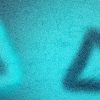UFOs: True Mysteries or Tough Imaging Challenges?
Phenomena can almost always be explained with science - including the limitations of our own imaging technology
In December 1954, the following sentence started an article on the front page of the New York Times:
“President Eisenhower said today an Air Force official had assured him that flying saucers were not invading the earth from outer space.”
One might imagine that Ike was a bit chagrined at having to make the proclamation. But the people of the United States had been in a bit of frenzy over flying saucers for almost a decade, after a private pilot named Kenneth Arnold said he’d seen nine circular objects flying at supersonic speeds near Mount Rainier in Washington state in 1947.
Sightings of saucers, or other Unidentified Flying Objects (UFOs), had become something of a national pastime. When a person wanted to report a sighting, the Air Force sent them a questionnaire with requesting specific, “data on date, time, size, shape, composition, speed, altitude, direction of travel, maneuver pattern, color, sound, length of time observed, sky conditions, visibility, ground direction of wind, name, age and mailing address.”
At that time, the Air Force had sent out over 1,500 of these questionnaires with the result that 90 percent of the observations could be explained by scientific or other means (the other 10 percent did not have enough data for evaluation).
Not much has changed in the last 70 years. People are still seeing UFOs in the sky. In 2020, nearly 7,200 sightings were reported to the National U.F.O. Reporting Center, a 15 percent increase from the previous year. And most of the time there are reasonable explanations for the phenomenon.
But not always.
Three Sightings Without Clear Explanations
Three different incidents of UFOs (or “Unidentified Aerial Phenomena” as the Air Force now calls them) have grabbed the imagination of alien conspiracy theorists in recent years. All three involved video taken from U.S. military planes flying off aircraft carriers near the coast of the U.S. that were using Navy Advanced Targeting Forward Looking Infrared (ATFLIR) sensor packages attached to the fuselages of the planes.
The first “encounter” was called “FLIR1” and recorded in 2004 by a jet fighter flying off the U.S. carrier Nimitz off the coast of San Diego. The other two—“Gimbal” and “Go Fast”—were captured by planes flying near the carrier Theodore Roosevelt off the coast of Florida in 2015.
In FLIR1, pilots reported an oval-shaped craft hovering over the sea and “churning in an unusual way.” One of the jets descended to investigate the Tic Tac shaped object, which then zoomed away at high speed.
“It accelerated like nothing I’ve ever seen,” one of the pilots, Commander David Fravor, told the New York Times in 2017.
The videos of the three encounters were released by the U.S. Department of Defense in 2020 as part of a bipartisan agreement for the government to release data on its Unidentified Aerial Phenomena program. The Department of Defense made no assertions on what the videos showed, but only wanted to clear up any confusion of if the videos were, indeed, real.
Common Sense Explanations
According to the Times, “[a]strophysicists say there are many potential explanations for what appears in the Navy videos, including atmospheric effects, reflections, and bugs in the code of imaging and display systems of fighter jets.”
Mick West, a UFO skeptic and former video game designer, pushes back on the conspiracy theorists on his website Metabunk.org. In a series of videos, West goes into great detail on possible explanations for the phenomenon in the three videos, among many others.
“What we’re seeing in the distance is essentially just the glare of a hot object,” West told The San Diego Union-Tribune in May 2021. ““So we’re looking at a big glare, I think, of an engine—maybe a pair of engines with an F/A-18—something like that.”
Other evidence, such as zoom level of the camera and the speed at which the jet fighters were traveling, can help explain the videos, West said. For instance, the parallax effect is when the position of an object appears to differ when viewed from different positions.
“Because of the extreme zoom and because the camera is locked onto this object … the motion of the ocean in this video is actually exactly the same as the motion of the jet plane itself,” West said. “You’re seeing something that’s actually hardly moving at all and all of the apparent motion is the parallax effect from the jet flying by.”
Lasers and Plasma Decoys
An invention by the U.S. military could also be behind the sightings, according to a report by Forbes in May 2020.
When a heat-seeking missile is tracking a jet, it follows its infrared signature. Militaries have developed countermeasures over the years, including deploying flares or infrared lasers to confuse the missile’s tracking.
One new recent development in jet fighter countermeasures is called “laser-induced plasma filaments” (LIPFs) wherein a short, intense, focused laser pulse can “create a glowing filament or channel of plasma” that can be used to confuse the infrared tracking of heat-seeking missiles, according to Forbes.
Plasma is ionized gas that can be created by an intense surge of heat or energy. LIPFs can be created in the air at distances of tens or hundreds of meters, in 2D or 3D shapes, through a process called raster scanning. LIPFs can be created instantly “at any desired distance from the aircraft, and can be moved around at will.” One interesting aspect about LIPFs is that they don’t just have to be infrared, but can emit light from any wavelength, including visible or ultraviolet spectrums.

Phantom infrared images that can move around at high speed, be deployed from long distance, and take any shape? Sounds like a recipe for infrared sensors to pick up mysterious images of unidentified aerial phenomenon, perhaps?
UFOs Are an Imaging Problem
Have extraterrestrial creatures been zooming around Earth for the last 70 years, confounding pilots, militaries, scientists and the random farmer? Well, maybe. But not likely.
The common theme for UFO sightings over the years is that there is often some type of easy explanation. Parallax effects, trigonometry, camera errors, infrared sensor malfunctions. Oftentimes, UFOs are a result (or can be explained by) some type of imaging technology. For instance, one of the great mysteries from NASA’s Apollo missions was a short film of a saucer-like shape taken during the descent of Apollo 16. Ultimately, the linear movement and parallax led researchers to determine that the shape was a reflection of the spacecraft’s floodlight.
Perhaps one day a sensor package will be developed that will eliminate any and all imaging errors to allow us to see through alien cloaking technology, (imagine!). But, until that point, UFOs will continue to be part of our cultural zeitgeist and keep us looking to the stars and wondering what else is out there.



 Infrared imaging applications: See the heat, feel the light
Infrared imaging applications: See the heat, feel the light  By uncertain light: the use of quantum mechanics in imaging
By uncertain light: the use of quantum mechanics in imaging 